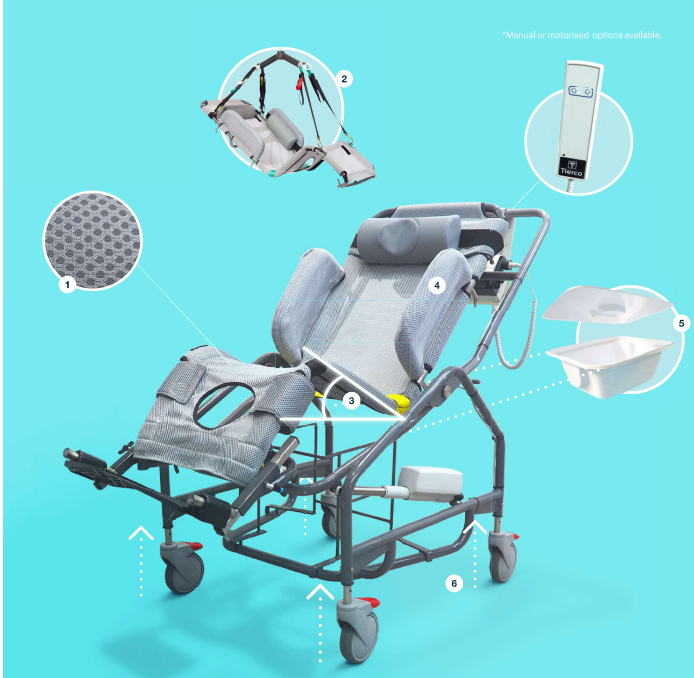Key Considerations When Choosing a Shower Chair
Choosing the appropriate shower chair is essential for ensuring safety, comfort, and independence during bathing, especially for individuals with mobility limitations. Selecting the right equipment involves assessing both patient needs and the environment, with special attention paid to the method of transfers, support requirements, and useful shower chair features.
Key Considerations When Choosing a Shower Chair
User Assessment and Transfer Methods
Begin by evaluating the user’s current and potential future mobility, including their ability to stand, balance, and perform transfers. The transfer method—such as a standing transfer, slide board transfer, or hoist-assisted transfer—will help determine the necessary features:
For standing transfers, adjustable seat height is crucial. The chair seat should be low enough for the user to sit back comfortably; fixed high seats may not be suitable and pose a falls risk.
For users needing hoist or lift transfers, features like tilt-in-space functionality and adjustable seat height can make transfers safer and more comfortable for both the user and the caregiver.
If the user performs transfers utilizing a side transfer or sliding board technique, the use of adjustable armrests that can be easily repositioned or removed may enhance comfort and reduce the risk of falls during the transfer process.
2. Comfort and Safety Features
Essential design aspects directly impact user experience and safety:
Adjustable seat height enables proper posture, promotes ease of transfer, and ensures feet rest flat on the ground for stability.
Backrests are important for those with reduced core strength or balance. Tension-adjustable and reclining backrests provide extra stability and energy conservation.
Armrests offer support during transfers and may swing away for easier side entry, while footrests enhance stability during bathing.
Padded seats and lockable casters add to comfort and security.
Drainage holes in the seat allow water to escape, preventing pooling and improving hygiene.
Integrated safety belts or harnesses are recommended for anyone at risk of sliding or falling out of the chair, especially during transfers or tilting.
Additional lateral supports to assist with upright midline sitting for comfort and postural alignment.
Head support to improve comfort and facilitate respiration and visual field.
3. Suitability to User Size and Home Environment
Verify weight capacity to ensure safe long-term use, especially for bariatric users. Look for reinforced frames and wide seats when needed.
Adjustable or compact models fit different body types and bathrooms. Foldable chairs or those with a small footprint benefit users with limited space or the need for portability.
Ensure the chair is compatible with the specific type of shower: roll-in, curbed entry, or bathtub.
4. Hygiene and Additional Functionality
Some chairs feature a commode opening, reducing the number of necessary transfers by allowing toileting and showering on the same equipment—beneficial for those with high fall risk or incontinence.5. Caregiver and User Collaboration
Consider the amount of assistance required. If caregiver involvement is frequent, opt for designs with easy access for washing, and ensure the chair’s height or features don’t force the caregiver into strenuous postures. Always consult healthcare professionals or occupational therapists for individualized recommendations tailored to the user’s diagnoses and home setting.
Safety Precautions During Transfers
Always check equipment for stability and integrity before use; ensure brakes are on before transferring.
Never attempt transfers on wet, slippery surfaces, and always provide necessary support for trunk control (use belts, armrests, or backrests as appropriate).
Do not leave users unattended on the chair.
A well-chosen shower chair not only supports independent, dignified bathing but also significantly reduces fall risk for both users and caregivers. Thoughtful assessment of transfer needs and prioritizing safety and comfort will result in the most appropriate equipment choice for each individual.

